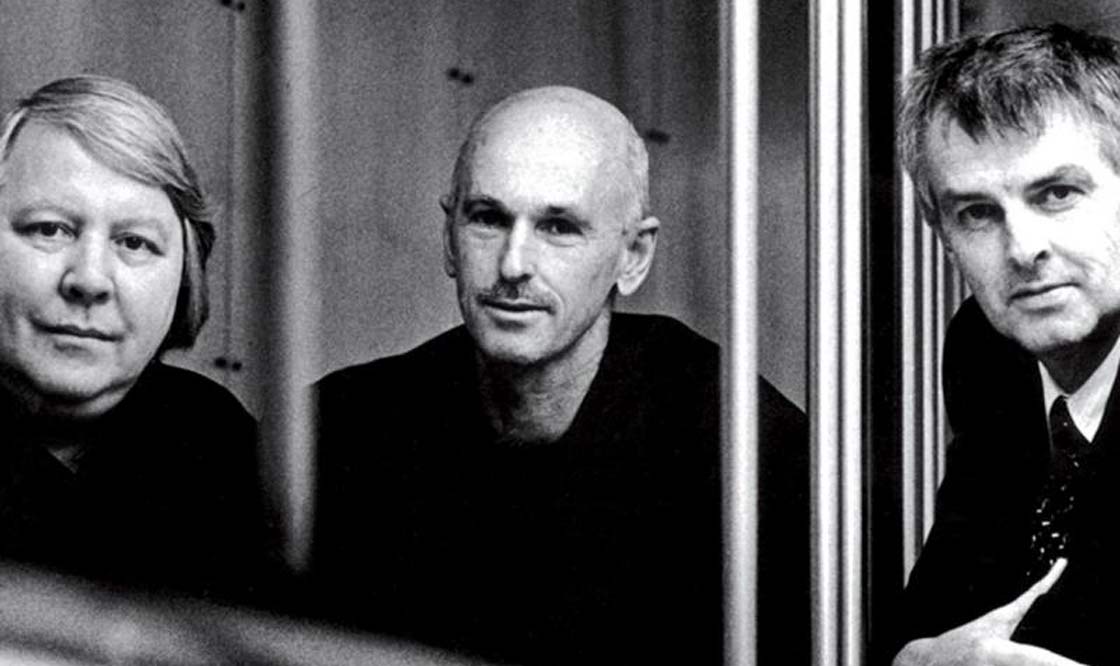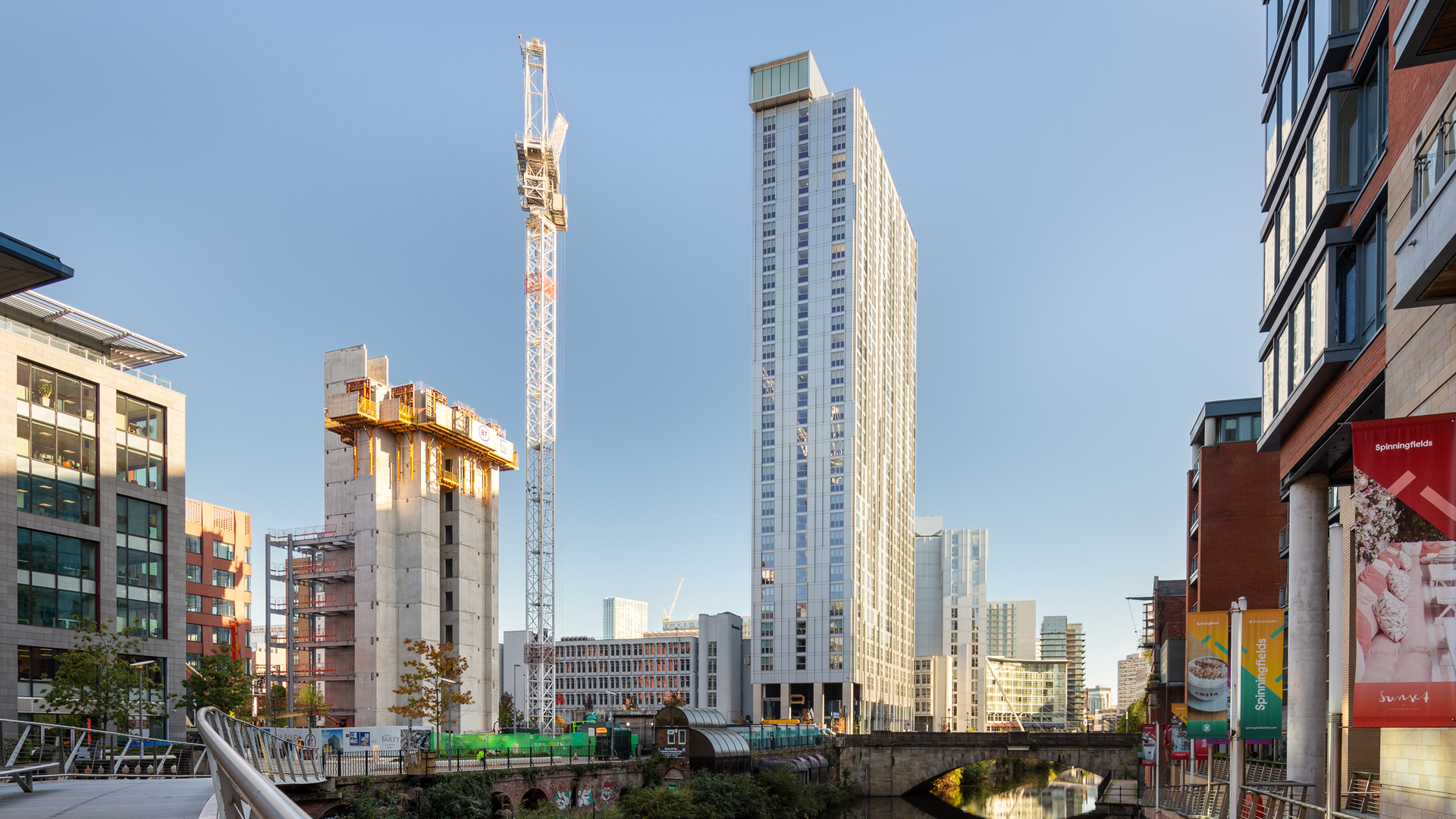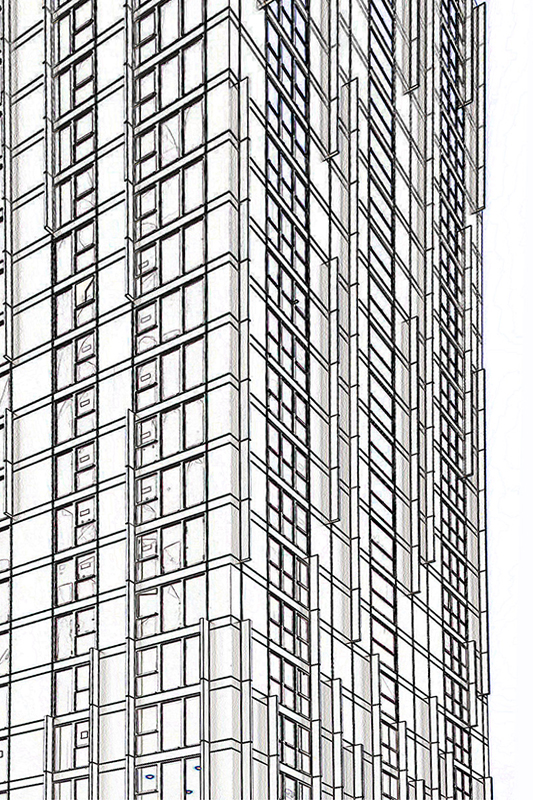



The new 35-storey residential tower located on the doorstep of Manchester’s central business district.

Typical Levels: Unitised system with DGU vision glazing, side hung windows and vertical aluminium fins
Typical Levels: Unitised system with Alucobond opaque insulated panels and vertical aluminium fins
Ground & Mezzanine: Stick system with DGU vision glazing, side hung windows and vertical aluminium fins
Trinity Riverview is a 35-storey residential tower located on the doorstep of Manchester’s central business district.
Thus, this highly prominent gateway location of the site required a building of exceptional design quality.
The tower features a simple architectural form expressed as a single billet of steel using silver metallic panels throughout the facade and natural anodised aluminium vertical fins to emphasise the slenderness of the massing.
The building consists of 318 apartments with communal spaces. The first three floors are set back from the street to draw views through to the river allowing the opportunity to incorporate four triple-height, freestanding columns to dramatically signal the main entrance to the scheme.